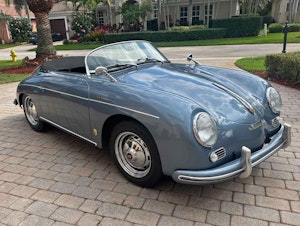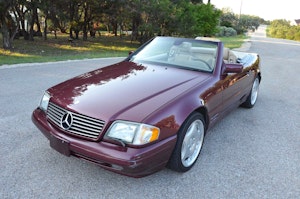Media | Articles
An Opel GT is the perfect budget head turner
Small project cars should come with small prices. Take the “Buick” Opel GT. It’s a car with all the swoops and curves of a C3 Corvette, but it requires half the storage space and is available for half the price.
[This article originally ran in Hagerty magazine, the exclusive publication of the Hagerty Drivers Club. For the full, in-the-flesh experience of our world-class magazine—as well other great benefits like roadside assistance and automotive discounts—join HDC today.]
Buick is in quotes because the Opel GT retailed to Americans through Buick dealers and even wore a GM badge, but it wasn’t really a Buick. GM had owned Opel since 1929, and the German car company’s specialty was making boxy commuter cars like the Kadett. In the early 1960s, Opel got an influx of passionate car people, including design director Clare MacKichan, whose previous work included a brand-changing two-seater called the Corvette, and Bob Lutz, who would go on to top jobs at Ford and Chrysler and then back to GM.
With encouragement from MacKichan and support from Lutz, a design team headed by Erhard Schnell sketched a sports car based on the Kadett. It went from concept in 1965 to production in ’68. The mechanicals were German, the bodies were from French coachbuilders, and the main market was the U.S.
Marketplace
Buy and sell classics with confidence
20190425125222)
Small European cars had been gaining a following in America, and Japanese cars were on the horizon, so many Big Three divisions imported and rebadged cars from overseas. GM’s Opel GT came to the U.S. at the end of 1968. Engine options were a 67-hp, 1.1-liter four and the more common 1.9-liter, with 102 horsepower initially and 92 after 1971. It’s hard to imagine customers walking into a Buick dealership looking for a Skylark and taking home a four-cylinder, two-seat import instead. But GM sold nearly 12,000 Opel GTs in the States in 1969 and 21,000 in 1970. That’s impressive considering the cars cost $3300 new—more than the Skylark and Gran Sport 455 and equivalent to a LeSabre.
The Opel provided all the wee-car fun of an MG or Sprite with no convertible complications. The performance reviews at the time weren’t overwhelmingly positive—Car and Driver described the 17-second quarter-mile time and sway-bar-less handling as “merely competent”—but the styling got raves. For a moment, it seemed like the GT might be a huge tiny success.
20190425125234)
Reality hit in 1970, however, when the Datsun 240Z came on the scene with its lower price, superior six-cylinder engine, and useful hatchback. The GT was outclassed. Opel continued to sell it with minimal changes through 1973, but its chance to dominate the U.S. small-car market had passed. Until now. The little GT can still be bought for a little price, with values for solid drivers in the $9000 range and good #2-condition (Excellent) examples hovering around $15,000. Many components are interchangeable across the years or upgradable with equipment from later Opel models.
You’ll need some emotional fortitude to shop for a GT, though. Harden your heart against the rusty ones with missing headlights, and know that repairing body damage is labor intensive. Drivetrain and interior work are much easier, with most parts available at OpelGTsource.com. Opel experts suggest a cooling system flush and a wiring check on the rotating headlights. Then get ready for big fun in your little Corvette.
20190425125208)









